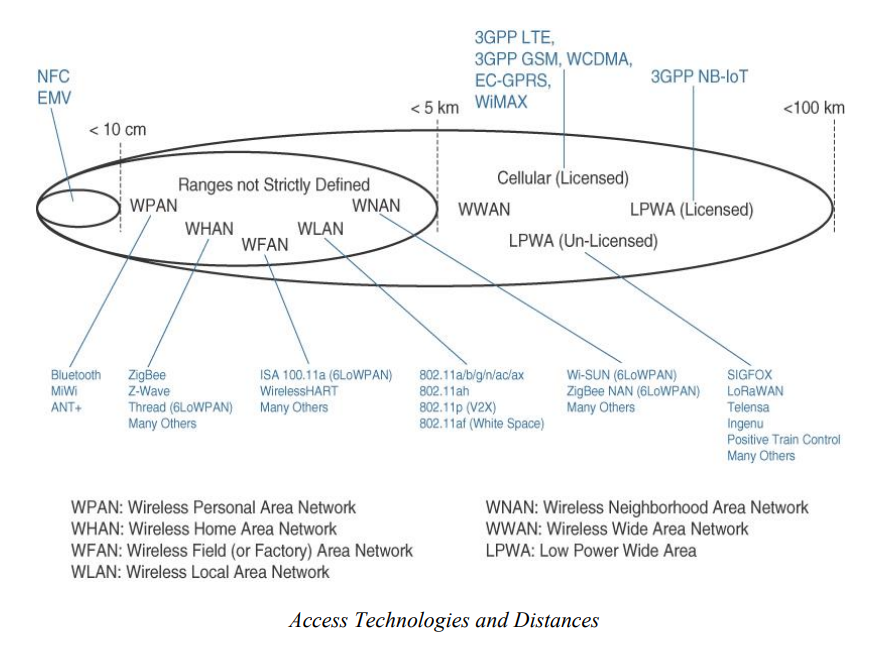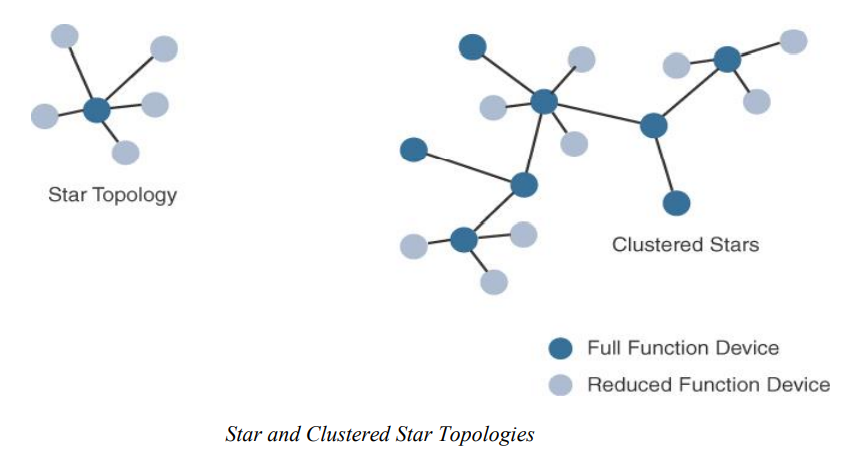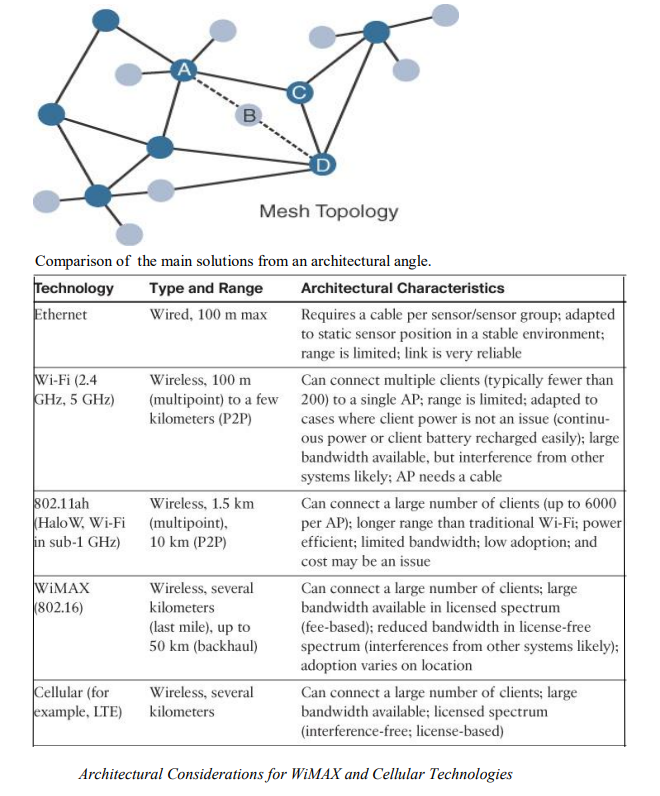Explain in detail the communication network layer. Illustrate the various access technologies with respect to distances.

Solution
Communications Network Layer -
Once you have determined the influence of the smart object form factor over its
transmission capabilities (transmission range, data volume and frequency, sensor density and
mobility), you are ready to connect the object and communicate.
Compute and network assets used in IoT can be very different from those in IT environments.
The difference in the physical form factors between devices used by IT and OT is obvious
even to the most casual of observers. What typically drives this is the physical environment in
which the devices are deployed. What may not be as inherently obvious, however, is their
operational differences. The operational differences must be understood in order to apply the
correct handling to secure the target assets.
Access Network Sublayer -
There is a direct relationship between the IoT network technology you choose and the
type of connectivity topology this technology allows. Each technology was designed with a
certain number of use cases in mind (what to connect, where to connect, how much data to
transport at what interval and over what distance). These use cases determined the frequency
band that was expected to be most suitable, the frame structure matching the expected data
pattern (packet size and communication intervals), and the possible topologies that these use
cases illustrate.
One key parameter determining the choice of access technology is the range between the
smart object and the information collector. Figure 2-9 lists some access technologies you may
encounter in the IoT world and the expected transmission distances.
Range estimates are grouped by category names that illustrate the environment or the
vertical where data collection over that range is expected. Common groups are as
follows:
* PAN (personal area network): Scale of a few meters. This is the personal space around a
person. A common wireless technology for this scale is Bluetooth.
* HAN (home area network): Scale of a few tens of meters. At this scale, common wireless
technologies for IoT include ZigBee and Bluetooth Low Energy (BLE).
* NAN (neighborhood area network): Scale of a few hundreds of meters. The term NAN is
often used to refer to a group of house units from which data is collected.
* FAN (field area network): Scale of several tens of meters to several hundred meters. FAN
typically refers to an outdoor area larger than a single group of house units. The FAN is often
seen as “open space” (and therefore not secured and not controlled).
* LAN (local area network): Scale of up to 100 m. This term is very common in
networking, and it is therefore also commonly used in the IoT space when standard
networking technologies (such as Ethernet or IEEE 802.11) are used.
Similar ranges also do not mean similar topologies. Some technologies offer flexible
connectivity structure to extend communication possibilities:
Point-to-point topologies
Point-to-multipoint

